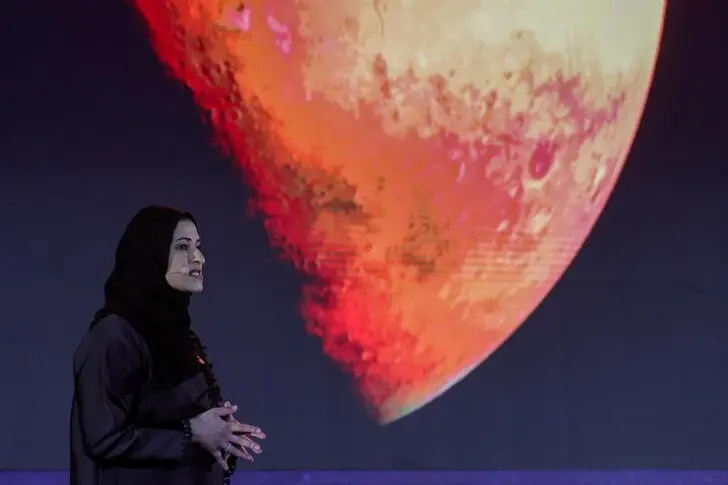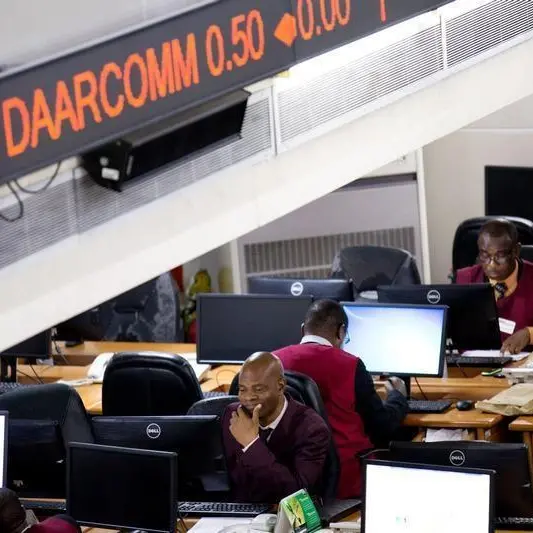PHOTO
Most Mars missions tend to focus on the planet’s geology, whether it is habitable, and — in the case of NASA’s Perseverance rover expected to land on Feb. 18 — if there is evidence of actual life. It is only recently that space-faring nations have shifted toward more direct and comprehensive studying of what is above Mars’s surface.
The UAE’s Hope probe, which entered Mars orbit last week, will be followed shortly by China’s three-part Tianwen-1 mission, comprising an orbiter, a lander and a rover, which launched at the end of July last year and will probably attempt a landing in May. While the UAE mission will focus on the atmospheric composition, China’s orbiter will study Mars’s magnetic fields and combine those findings with those gathered from the surface to create a geological map of the planet.
Despite the scientific underpinnings of Mars missions, the rush of established space-faring nations and private entities is fueling a new space race, well beyond the Moon. As more nations send their own probes and rovers, the world as a whole inches ever closer to what would be two of its greatest achievements since humans first ventured into space in 1961. Those are finding evidence of extraterrestrial life and, eventually, landing the first humans on another planet.
Discovering even the smallest traces of life on Mars would not only transform our understanding of the universe, it would also help us delve into the origins of life on Earth. However, the arrival of the first humans will have to wait until the world settles questions concerning Mars’s habitability. Research has long shifted toward the feasibility of converting raw Martian materials into resources humans can actually use to survive on the barren planet; trying to carry fuel and supplies for a journey that lasts 14-18 months only compounds the already complex dynamics of interplanetary travel.
Thus, for now, Mars will remain restricted to unmanned probes, landers, rovers and the first-ever drone onboard the Perseverance — limited only by the usual bottlenecks of timing and cost. Most missions to Mars have to be launched in a tight biennial window when the alignment of Mars and Earth are at their closest, which makes the 7 to 9-month one-way journey for unmanned vehicles, such as Hope, more feasible. That is why every 26 months there is a frenzy of activity as nations scramble to launch their programs in that tight window.
Another factor that has fueled the extraterrestrial race is the changing calculus with regard to the cost of sending humans and payloads into orbit and beyond. Since the inauguration of the space age in 1957 with Sputnik, launch costs were a massive bottleneck to further space exploration. A passenger traveling by air will cost $4-$10 per kilogram, while launching a satellite into low earth orbit could cost up to $20,000 per kilogram.
The high cost, complexity and mixed reliability of rocket propulsion restricted space to governments and wealthy corporations. However, the privatization of space and the entry of companies such as SpaceX, BlueOrigin, Planetary Resources, United Launch Alliance and Planet Labs has unleashed a tidal wave of competition that has not only fueled the space rush but also driven costs low. The UAE's Hope probe cost about $200 million, cheaper than many Hollywood films; actually going to space now costs less than making a movie about it.
As positive as these developments are, space travel remains an exceedingly dangerous and risky undertaking, more so for missions to Mars, more than half of which have failed. Nevertheless, the rush to be the first to make important discoveries on Mars and eventually transport humans to the red planet has only intensified. It has gone beyond a race of flags to cover the 225 million kilometers between Earth and Mars or to pioneer innovations borne from its successes.
A fast-growing space industry is already preparing for the next phase beyond exploration, going into tourism and commercial opportunities, including mining Martian resources such as nickel, titanium, platinum group elements and even lanthanides that are crucial for our electronic devices. Unlocking vast and as-yet untold riches will fuel the exponential growth of the space industry, which creates a strategic imperative for space-faring nations to want to monopolize interplanetary travel, the scientific discoveries they elicit and the technological innovations borne from them.
- Hafed Al-Ghwell is a senior fellow with the Foreign Policy Institute at the John Hopkins University School of Advanced International Studies. He is also senior adviser at the international economic consultancy Maxwell Stamp and at the geopolitical risk advisory firm Oxford Analytica, a member of the Strategic Advisory Solutions International Group in Washington DC and a former adviser to the board of the World Bank Group. Twitter: @HafedAlGhwell
Copyright: Arab News © 2021 All rights reserved. Provided by SyndiGate Media Inc. (Syndigate.info).























